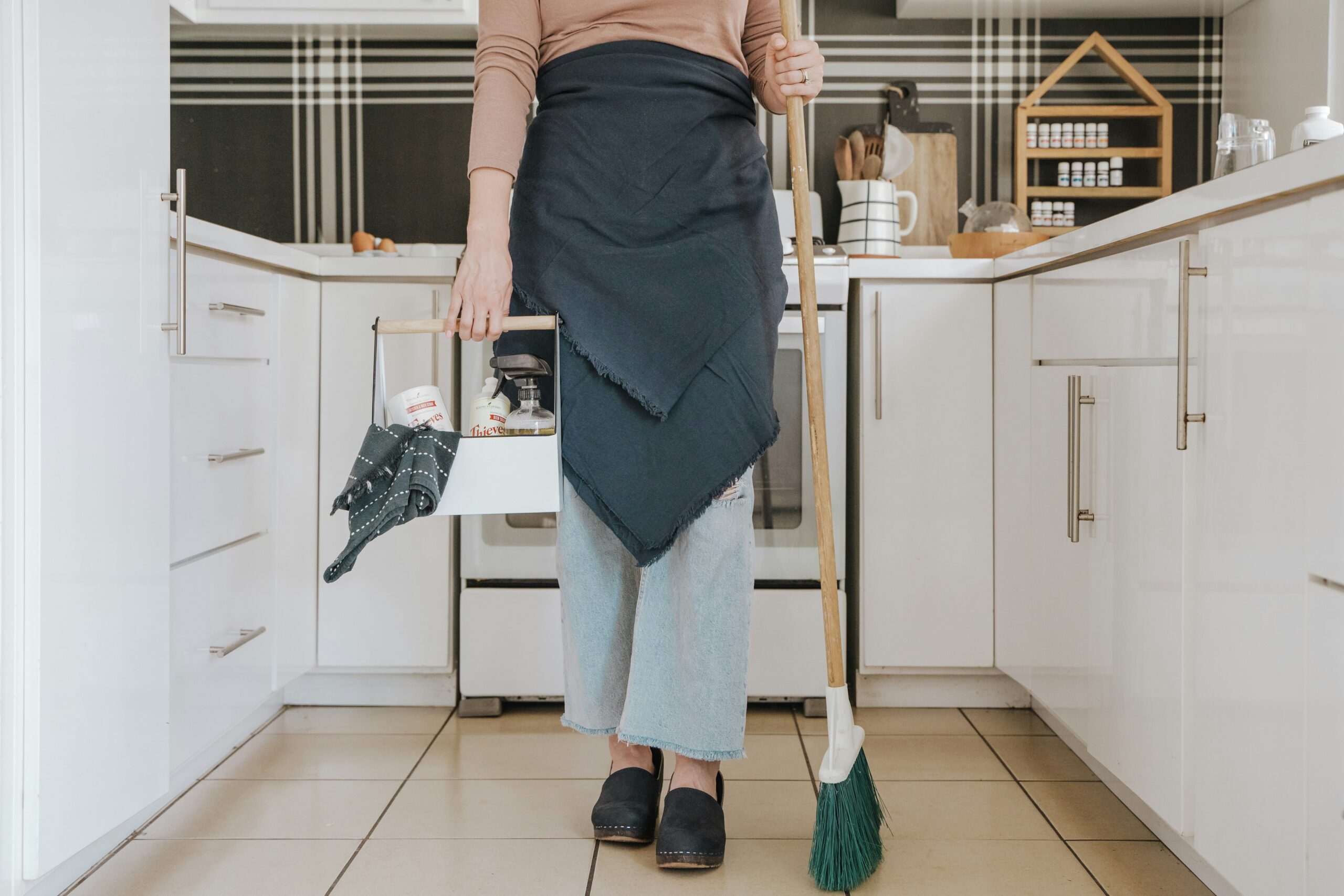The Ultimate 4-Step Plan for Vacation Rental Owner Onboarding
Having a streamlined and consistent onboarding process is fundamental to being able to scale your business and bring new owners into your portfolio with ease.
Whether you present your strategy as a PDF or digital brochure, on a Zoom call, or on your website, you want to be able to demonstrate your exact processes to owners as you sell and onboard them to your service.
A tried-and-tested onboarding process for your owners means that you’ll find properties that will offer the best ROI, and ensure that owners fully understand and respect what you do, and how you do it.
That’s why in this piece, we’ve listed our ultimate 4-step vacation rental property manager checklist that you can follow each and every time to onboard owners with ease (and get them the success they want).
Table of Contents
1. Learning from the experts: Onboarding with Restavio
2. What does onboarding an STR homeowner really mean?
3. The ultimate 4-step property management owner onboarding checklist
4. Vet the homeowner
5. Define the homeowner’s budget
6. Offer proof of concept and wow them with tech
7. Set up your design staging for the properties
8. Onboarding vacation rental owners: The bottom line
Find out how you can scale your cleaning operations.
Learning from the experts: Onboarding with Restavio
To compile our checklist, we spoke to none other than Ed Hsieh and Donald Kim, co-founders of Vancouver-based smart hospitality management company Restavio, and the smart Breakfast Hotel in Japan.
Who better to ask when it comes to onboarding owners seamlessly, for ultimate success?
Restavio has seen phenomenal success. It managed to not just survive, but thrive during the pandemic, and expanded its—extremely lean—operation from seven to 80 properties in just over a year.
It operates in a short-term rental style (but has hotel licenses) and has just one full-time staff member per 60 properties.
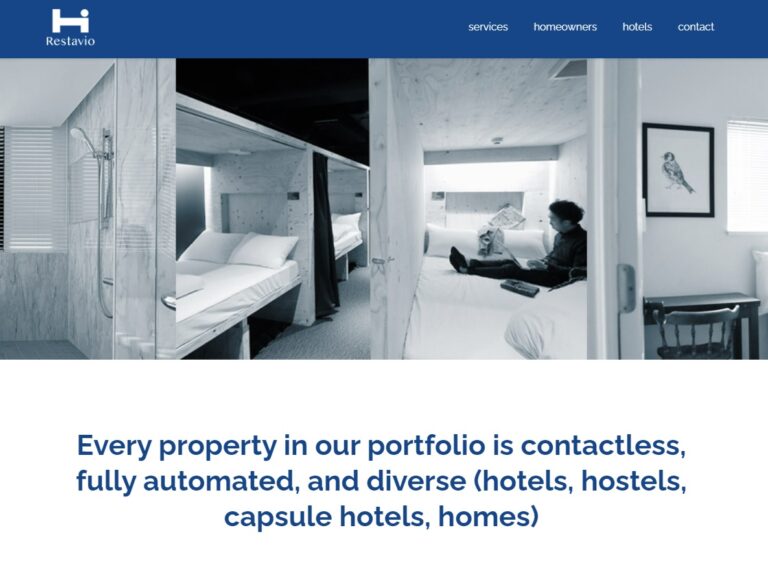
Credit: Restavio.com
Its revenue has soared x7 in the past year, and it has three times the standard booking volume on Airbnb, with seamless and confident owner onboarding a major part of its successful strategy.
More proof of this business model, if it were needed, can be seen in the success of Vintory, a similar company whose stated aim is to build a strong vacation rental community.
It provides software designed to target and close homeowner deals, add to your inventory consistently, and offer personalized, professional guest management for guests who book your new properties.
But before you even get guests booking to stay, you need to make sure you’re onboarding the perfect owner properties into your portfolio, with minimal stress and maximum success for everyone involved.
Here’s how.
What does onboarding an STR homeowner really mean?
Put simply, onboarding an STR homeowner means bringing a homeowner, who has a property that would work perfectly for your short-term rental business, into your portfolio.
This means reassuring them that you are the manager for them and that you will take care of their property and maximize the possible revenue, ensure consistent bookings, and attract (and then manage) good quality guests.
As Donald Kim from Restavio explains: “STR owner onboarding is the process of executing on an agreement, furnishing and designing the property, professional pictures and then listing the property on the OTAs.”


The ultimate 4-step property management owner onboarding checklist
Put simply, onboarding an STR homeowner means bringing a homeowner, who has a property that would work perfectly for your short-term rental business, into your portfolio.
This means reassuring them that you are the manager for them and that you will take care of their property and maximize the possible revenue, ensure consistent bookings, and attract (and then manage) good quality guests.
As Donald Kim from Restavio explains: “STR owner onboarding is the process of executing on an agreement, furnishing and designing the property, professional pictures and then listing the property on the OTAs.”
Here’s how to do it.
1. Vet the homeowner
You may think that any willing homeowner with a property could be a good fit for your business, but this isn’t necessarily the case.
In fact, it’s crucial to check that they’re right for you first, to make sure that the property will offer the greatest return on investment and that the owner’s style and expectations align with your own.
This includes being realistic with them about their property’s potential, and the practical considerations of rental, such as insurance and damage risks.
This might mean turning down properties that won’t work best, which may sound counterintuitive, but will actually be better for your business long-term.
As Ed Hsieh explains:


2. Define the homeowner’s budget
The next step is to define the homeowner’s budget, to ensure that they understand that there will be some upfront cost involved in marketing their property and ensuring it is listed in the best light.
As Ed Hsieh explains: “A lot of homeowners we encounter feel that it’s a rental property, and it just becomes a place to dump used furniture.
“We see utensils and dishware that do not match, or cheap used furniture, and appliances that do not last. They don’t understand that they are about to enter the hospitality industry.”


In contrast, the best homeowners will understand that they are entering the hospitality industry, and will be happy to spend some initial outlay in order to attract the best guests and get the best return on investment through you as their manager.
This means investment in the design, furniture, and styling, for listing photos, and an understanding that rental properties still need to be maintained and updated.
Of course, the day-to-day management is up to you, but we recommend ensuring that owners know that the better their budget upfront, the better long-term ROI—and the easier your job will be too.
3. Offer proof of concept and wow them with tech
Overall, owners want to know they can trust you with their property. They want to know that whatever budget they put in, they’ll get great ROI. They want to feel safe in the knowledge that their property won’t be damaged, violate local laws, or lose money.
Ultimately, they want to be certain that you’re the right manager for them.
In some cases, as with Ed Hsieh, you might even offer a shorter contract at first, to prove that your processes really work. The owner can sign up for a short-term deal, during which you show them that their methods really work.


He says: “We tell the property owner that it’s about our reputation too. So we say to them: ‘Let’s try for a couple of months, and if you’re not satisfied we can negotiate.’
“Luckily everybody just sticks with it, because we are able to show them the bookings and it’s hassle-free. The owner doesn’t need to care about anything. They feel safe.”
Making guests feel safe means showing them “proof of concept.”
This means tech. Why? Read on!
1. Introduce your tech stack
If there’s one thing that prospective owners want, it’s consistency. Consistency of bookings, safety, and revenue. And if there’s one way to ensure consistency, it’s through tech.
By ‘delegating’ your admin, security, and processes to your technology stack, you’re showing owners exactly how you offer a professional, streamlined and consistent operation throughout.
Showing owners that you rely on robust technology to manage your behind-the-scenes operations builds trust and proves that you take your responsibility as an owner seriously.
Smart devices that control lighting, AC, and thermostat levels can also help save energy and costs—so you can keep owners’ property safe, and save them money on bills.
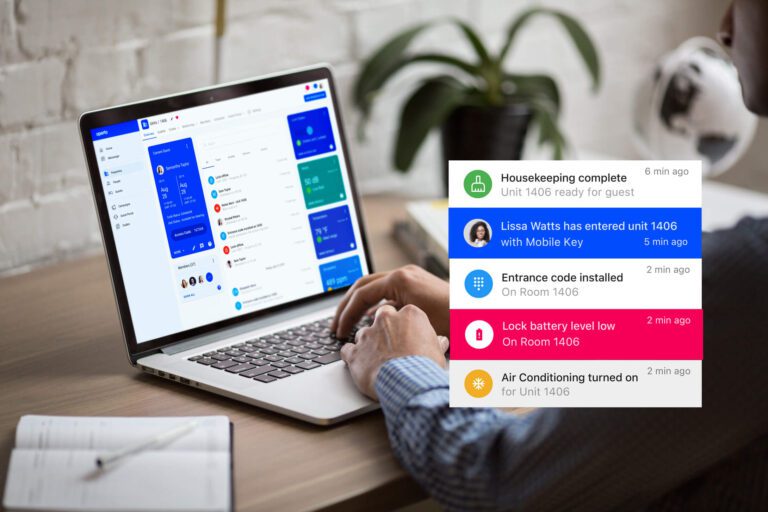

Truly great technology will also enhance the guest experience. Automated keyless and contactless check-in, streamlined in-room communication, and easy check-out means guests will have an easier time and leave better reviews, to help ensure even more bookings.
You want to present each part of your tech stack in turn and show owners why each tool helps to improve the professionalism of your operation, boost security, and ensure guest satisfaction, for happy guests, good reviews, and consistent ROI.
Your tech stack might therefore include:
- A reputable PMS such as Mews, Hostaway, or WebRezPro; which manages guest data, your booking calendar, and integrates with platforms that can manage guest communication and online check-in (such as Operto Guest).
- A connecting platform such as Operto, which can integrate with tools such as
- Autohost – to check guest IDs and prevent fraud.
- NoiseAware – to monitor room occupancy and prevent destructive parties.
- Yale, Nuki, Salto, or Schlage smart locks – to enable secure access with codes that change with each guest or housekeeper, for added security.
- Ecobee thermostats – to save on energy and give guests added personalized control of AC or heat.
- A wide range of smart devices – for extra options such as light control, to save energy and again give guests added control.
- Operto Teams – to coordinate and manage housekeeping and other staff to offer quick room turnarounds, and ensure good property maintenance and satisfied guests.
2. Soothe them with your security processes
Showing your prospective owners your excellent tech stack will boost safety and security, for extra peace of mind.
Platforms such as Operto can sync with tools that do everything from verifying ID of prospective guests, implementing a trustworthy screening process, performing guest background checks, monitoring payments for fraud, taking out a robust insurance policy, and taking security deposits.
Emphasizing this to the homeowner will give them added peace of mind that anyone staying in their property will have been subject to rigorous checks beforehand, reducing the risk of damage or potential issues.
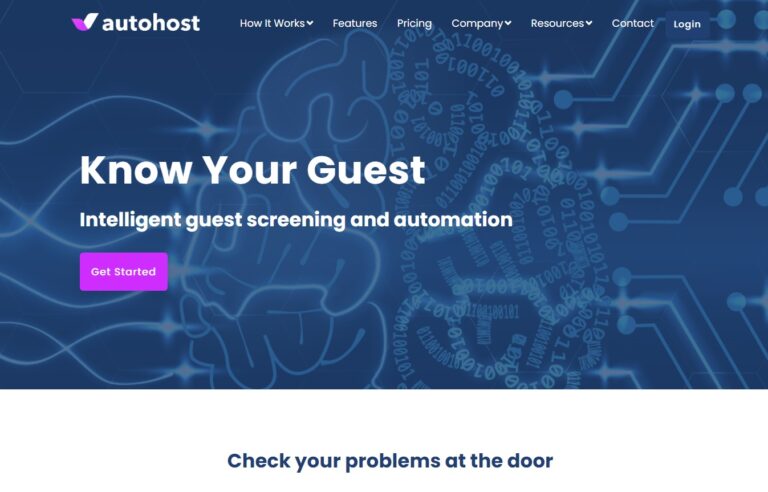

Credit: Restavio.com
As explained above, it’s also a good idea to explain how you can connect noise monitoring devices to your PMS through tools like Operto, to prevent unauthorized parties or gatherings, and any consequent risk of damage, complaints from neighbors, or problems with the local authorities.
Lastly, showing your owners that you have enabled smart locks for contactless access control proves to them that the property is only ever accessible to those authorized to enter, while platforms such as Operto can automatically change keycodes on checkout.
This all ensures an even greater layer of security, for added owner peace of mind.
It’s also important to explain to homeowners how important technology is in massively improving the guest experience—and why this is so crucial.
Ultimately, a better guest experience means happier guests, which means better reviews, more consistent bookings, and a greater ROI for the homeowner.
We recommend mentioning how contactless check-in for vacation rentals gives guests an easier time on check-in (as they can use the keycode sent in advance to let themselves in whenever they want, instead of waiting for an awkward meeting), and they can also check out easily in the same way.
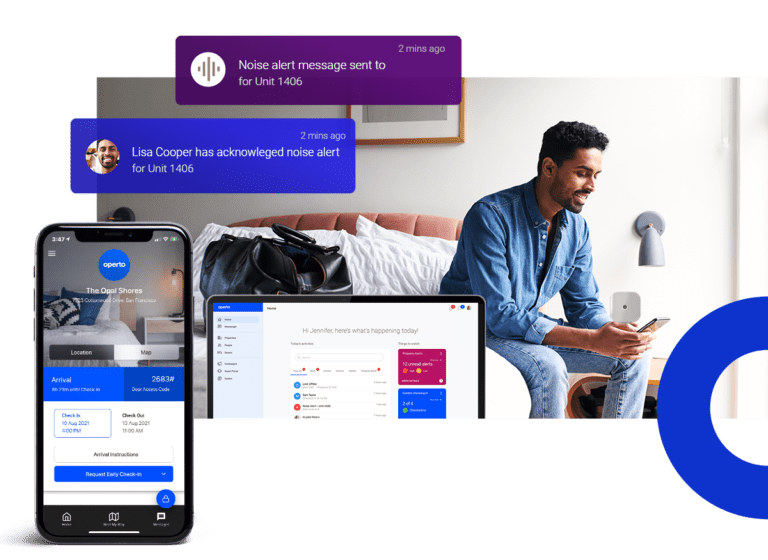

Make sure your homeowner knows that offering this service through tech improves the customer experience while reducing needless 1-to-1 interactions, stress in case of delays, or the need for someone to be on-site at all times, improving the guest experience and reducing the risk of security problems or delays on check-in and check-out.
We also recommend showing your prospective homeowner that your tech stack facilitates guest communication too, and enables you to offer personalized services via integration with your PMS.
Using technology in this way means that you can “outsource” your repetitive work to your tech systems, and leave you more time to actually give guests a personal, comfortable stay. This is likely to please them even more, leading to better reviews and more bookings, and better ROI.
You might also explain to your homeowner how your technology enables you to answer your guests’ most frequently asked practical questions—such as where to eat, how to park, what the Wi-Fi code is, and what time to check out.
Again, we recommend explaining to your homeowner that sending this all automatically and digitally means that you now have the time and headspace to chat to them personally, and offer tailored tips that go beyond the usual admin, for an even better stay.
Harnessing the power of tech also means that you can keep a tighter eye on what’s happening with your properties (and platforms such as Operto simplify this so you can see it via a single dashboard to boot).
Make sure your homeowner understands that this means that you can please guests with upsells such as early check-in or late check-out because you can see at a glance which properties need cleaning and which don’t, and the state of your booking calendar at any given moment.
This should persuade your prospective homeowners that you always have control of what’s going on with your properties, and there’s no risk of guests overstaying their welcome, or the property being damaged or left in a poor state.
4. Hype up your cleaning processes
Talking of late check-outs, we recommend hyping up how your tech stack helps to improve your cleaning process. Explain to them how you coordinate staff efficiently and ensure that the property will be kept clean and presentable at all times.
Again, we recommend explaining to the homeowner how enabling contactless access means you can give your housekeeping staff their own keycodes too.
Enabling this means that you can monitor cleaners’ work and keep track of which property is ready for new guests at any given moment, via a single dashboard, so there’s no risk of the owner’s property being unprepared for a new guest (and therefore no risk of bad reviews or a loss of reputation).
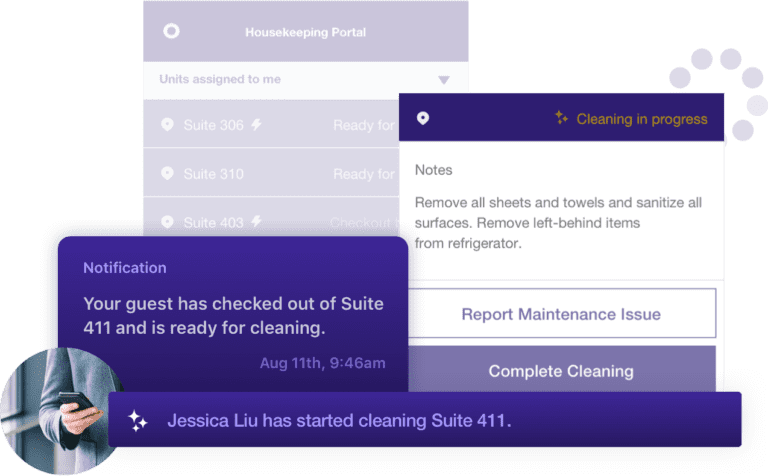

We recommend showing your homeowner that platforms such as Operto Teams let you see your property information and staff status at a glance, including how long cleans are taking, and whether any rooms need early or late turnarounds. You can also provide extra cleaning consistency via digital checklists, to ensure that cleaners do a great job, every time.
In a post-Covid world, cleanliness is even more important than it was before. So, demonstrating how you plan to ensure top-notch cleaning can provide reassurance for owners and their eventual guests.
As Ed Hsieh says:
“We have raised everything to hotel standards. We describe these services on our listings, so the customer can see them, and feels that we are reliable. We think that both the owner and the guests need to understand: ‘OK, how can I know your place is safe, or better than a hotel?’ That’s part of professional management, being aware of these issues.”
Using revenue management technology can also reassure owners about the ROI they can expect to gain. We recommend showing them that you use tools such as Wheelhouse, to ensure the best possible price per night, and make sure you are competitive and profitable all year round.
This is something that Restavio uses to great effect. It enlists pricing tools to not only ensure competitive rates, but also to target its intended, perfect customers in a particular niche, whether they’re professional workers with money to spend, or international students seeking a good bargain.
Ultimately, showing owners the revenue management technology that you use helps to give them peace of mind that whatever the market is doing, you’ll be ahead of the trend, and will be able to ensure the best ROI for their property.
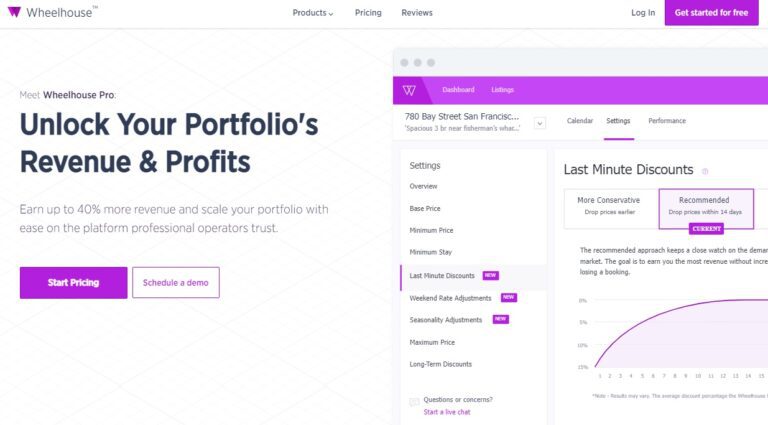

Credit: UseWheelhouse.com
As Ed Hsieh explains: “We use software to know the market price so we can predict how much it will be in the future…We can target people in our niche, and find the price that in the long-term makes everybody happy.
“We can also show proof of our own research and data too. During the pandemic, people thought that no one would be booking anywhere, but actually, our data in Vancouver showed that we had an average 92% of occupancy rate, so it was still super high.
“We could show owners that working with us still made sense.”
Ultimately, you must also show owners how you plan to get bookings through the door. Inevitably, this means demonstrating how you use technology to achieve this consistently.
Whether you’re relying on OTAs or direct bookings; whether you have a killer social media marketing strategy or a foolproof way to maximize Airbnb confirmations, showing owners how you will get their property out there is key.
This also includes showing owners the ways you encourage guests to leave five-star reviews.
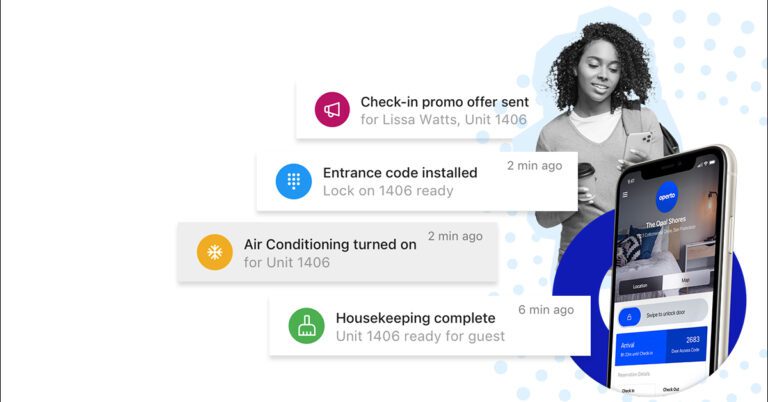

This might mean showing them the automated messages you send just before guests check out, or the email marketing campaign you set up to keep your relationship with them going year after year.
Ensuring great guest experiences and standards right from the start leads to great reviews, which in turn offer excellent social proof, and help ensure even more trust and bookings. It’s another virtuous circle.
This is crucial.
As Ed Hsieh explains: “A property management company needs to implement these standards from the first conversation, to avoid getting bad reviews.
“Because once bad reviews accumulate, OTAs such as Airbnb will delist the property, and it takes a lot of work to get the listing back up. So if you address these ‘standards’ from the beginning, it’s less work in the future and fewer headaches for everyone.”
4. Set up your design staging for the properties
Technology is of course paramount, but even the greatest tech systems and professional photography can’t fix bad design and an unappealing set-up. Attracting the right owners and guests is also about ensuring your real-estate looks and feels the part.
This means designing and setting it up for the kinds of experiences you want your guests to have.
This might include:
- The colors and furniture used (deep restful green or comfortable sofas, for example)
- The appliances provided (a luxury coffee machine, say)
- The vacation rental amenities and gifts (a bottle of regional wine or local artisanal chocolate) given as extra welcome treats.


This is something Ed Hsieh, a former interior designer, knows well.
“I know what designs make people comfortable, so they want to sleep, not to party. We want people to have a good comfortable area. Maybe they might do a little bit of work, but mostly our spaces are for rest, right? So we have to design that in.”
Explaining this to homeowners will clearly demonstrate your understanding of intentional design.
Coupled with sensitive investment—as explained in the budget section above—this shows owners that everything you do, from design to booking to check-out to cleaning, is designed with guests, security, respect for the property, and owner ROI in mind.
Onboarding vacation rental owners: The bottom line
Ultimately, onboarding your perfect owners means showing them how you plan to ensure consistency, safety, security, streamlined operations, and predictably good reviews, every time.
This means ensuring your processes are as dependable as possible, and your systems work flawlessly, by investing in a top-notch tech stack.
Show your prospective owner that your tech systems work easily and reliably. Demonstrate to them your exact, proven methods that you use to ensure consistent bookings and predictable ROI, with maximum revenue, while also enabling them to save time, and expend minimal effort
.
This means showing them that you use tools such as Yale smart locks for access, Autohost for security, NoiseAware for occupancy, Wheelhouse for revenue management, and Operto Teams for staff. Show them how all these tools connect and work together via an umbrella tool such as Operto, which in turn connects to your central PMS, for ultimate control and predictable results.


Showing them your stellar tech stack, along with excellent design and your plans for how to offer a personalized service, shows homeowners your proof of concept like no other.
Taking them through each stage of this onboarding process—demonstrating the technology during a Zoom call, giving them a brochure that explains everything in detail, or taking them through an in-person presentation of each part—will give them the confidence that you’re the property manager for them.
Making a flawless tech stack a central part of your operations ensures a brilliant experience for your guests, meaning that owners will easily see how you can guarantee excellent ROI, and be confident that they made the best choice for their rental property.
A profitable rental property for owners, and a thriving property management business for you.
![5 Steps to Scale Your Vacation Rental Business [2024]](https://operto.com/wp-content/uploads/2022/11/shutterstock_1575539170-scaled.jpg)
